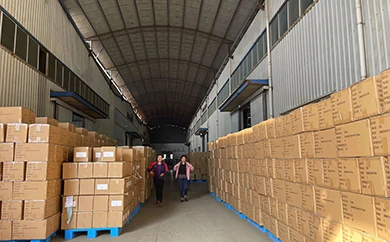
Comparing Aluminum Griddles and Cast Iron Cookware for Your Kitchen Needs
When it comes to cooking, the choice of cookware significantly impacts the flavor, texture, and overall quality of the food. Two popular options for griddles are aluminum and cast iron, each with its own unique properties and advantages. In this article, we will explore the differences between aluminum griddles and cast iron griddles, helping you choose the best option for your culinary needs.
Aluminum Griddles
Aluminum griddles are often favored for their lightweight and high conductivity. This means they heat up quickly and evenly, providing a consistent cooking surface. One of the best features of aluminum griddles is their nonstick properties, especially when coated with materials like Teflon. This makes cooking and cleaning up after meals hassle-free, as food is less likely to stick to the surface.
Another advantage of aluminum is its ability to resist rust and corrosion, making it a practical choice for outdoor cooking or for those who might not have the time to properly care for their cookware. Additionally, aluminum griddles often come at a lower price point compared to their cast iron counterparts, making them an attractive option for budget-conscious consumers.
However, there are some downsides to consider. Aluminum does not retain heat as well as cast iron, which can be a disadvantage when trying to achieve a perfect sear on meats or maintaining the desired temperature during cooking. Furthermore, while most aluminum griddles are designed to be durable, they can be more prone to warping if subjected to high heat for prolonged periods.
Cast Iron Griddles
On the other hand, cast iron griddles are renowned for their excellent heat retention and distribution. This makes them ideal for slow cooking, frying, and even baking. Many professional chefs swear by cast iron cookware for its ability to create a nice crust on meats and evenly cook food due to its thermal properties. Once seasoned properly, cast iron griddles become naturally nonstick over time, enhancing their appeal for home cooks.
aluminum griddle vs cast iron

Cast iron is also incredibly durable. With the right care, a cast iron griddle can last for generations and often improves with age. It is not uncommon for families to pass down cast iron cookware as heirlooms. Additionally, cast iron griddles are versatile and can be used on the stovetop, in the oven, or even over an open flame, thus catering to a wide range of cooking methods.
However, cast iron does require more maintenance than aluminum. It needs to be seasoned regularly to prevent rust and maintain its nonstick surface. It’s also heavier and can be more cumbersome to handle, particularly when it’s full of food. Lastly, cast iron can be quite pricey compared to aluminum, but many cooks deem it worth the investment for its performance and longevity.
Conclusion
Ultimately, the choice between an aluminum griddle and a cast iron griddle boils down to personal preferences and cooking styles. If you prioritize quick heating, lightweight handling, and ease of cleaning, then an aluminum griddle might be the right fit for you. It suits casual cooks and those who value convenience.
Conversely, if you are serious about your cooking or enjoy techniques like searing and slow cooking, a cast iron griddle could be the better option. Its heat retention, durability, and versatility make it a favorite among serious home chefs and culinary enthusiasts alike.
In summary, both aluminum and cast iron griddles have their merits and can produce delicious results, but understanding their differences will help you make an informed decision that best meets your cooking needs. Regardless of which material you choose, the most important thing is to enjoy the cooking process and the delightful meals that result from it.
-
Season Cast Iron Perfectly with GPT-4 Turbo TipsNewsAug.01,2025
-
High Quality Cast Iron Cookware - Baixiang County Zhongda MachineryNewsAug.01,2025
-
Premium Cast Iron Pan: Durable & Perfect HeatNewsAug.01,2025
-
High Quality Kitchen Durable Black Round Cast Iron Cookware Pancake Crepe Pan-Baixiang County Zhongda Machinery Manufacturing Co., Ltd.NewsAug.01,2025
-
Cast Iron Cookware - Baixiang County Zhongda Machinery | Nonstick, Heat ResistanceNewsAug.01,2025
-
High Quality Kitchen Durable Black Round Cast Iron Cookware - Baixiang County Zhongda Machinery | Non-Stick, Heat Retention, DurableNewsJul.31,2025


